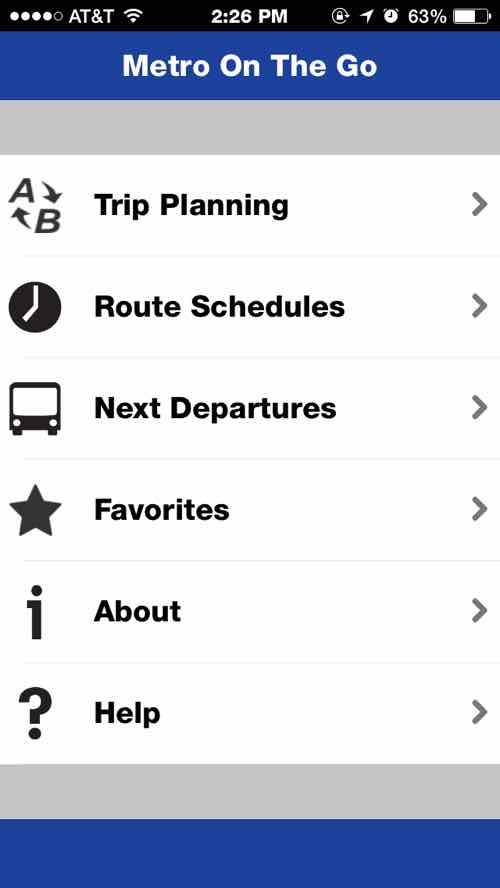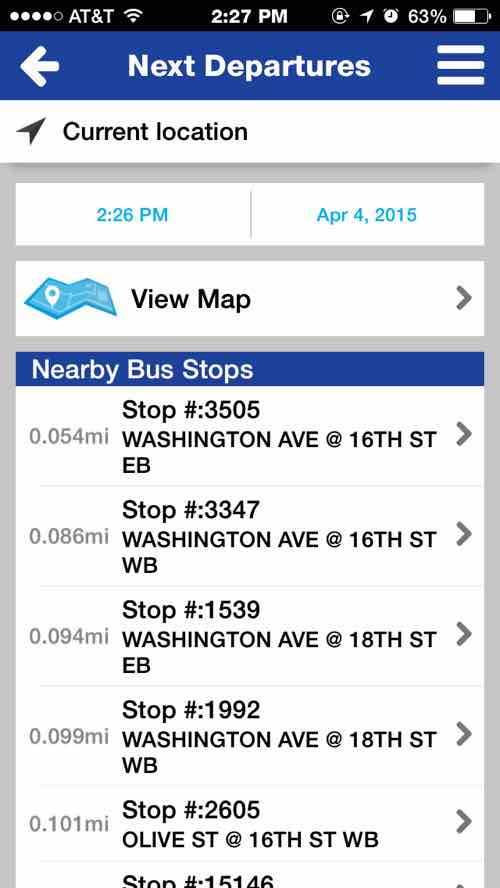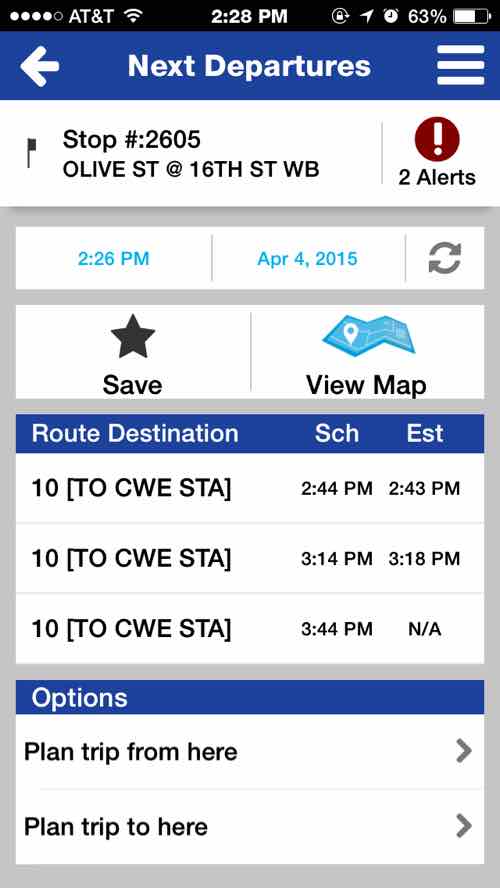Good News Friday: Metro Mobile App
Last week our transit agency, Metro, released its first mobile app — called Metro On The Go:
You asked for a Metro app — and now you have it! Metro On The Go, the official mobile application of Metro transit, is now available. You can download it for free from the Apple App Store and the Google Play Store.
Metro On The Go lets you plan your trip on Metro transit, check schedules for MetroLink and all 75 MetroBus routes, and tap into real-time vehicle data so you can see when the next bus will arrive — all from the palm of your hand. (NextStopSTL)
The app is available for Android & iOS mobile devices. I’ll share my thoughts on the iOS version later in this post, but first I want to bring up an issue before others do. Some may say things like “not everyone has a smartphone”, “not everyone can afford a smartphone”, “this is elitist”, etc. These people likely have broadband at home and choose to not have a smartphone — for others the reverse is the case:
10% of Americans own a smartphone but do not have broadband at home, and 15% own a smartphone but say that they have a limited number of options for going online other than their cell phone. Those with relatively low income and educational attainment levels, younger adults, and non-whites are especially likely to be “smartphone-dependent.” (Pew Reseach — U.S. Smartphone Use in 2015)
From the same source:
Lower-income smartphone owners are especially likely to use their phone during a job search. Compared with smartphone owners from households earning $75,000 or more per year, those from households earning less than $30,000 annually are nearly twice as likely to use a smartphone to look for information about a job — and more than four times as likely to use their phone to actually submit a job application.
Similarly, “smartphone-dependent” users are much more likely to use their smartphones to access career opportunities. 63% of these smartphone-dependent users have gotten job information on their phone in the last year, and 39% have used their phone to submit a job application.
Young adults (85% of whom are smartphone owners) are also incorporating their mobile devices into a host of information seeking and transactional behaviors. About three-quarters of 18-29 year old smartphone owners have used their phone in the last year to get information about a health condition; about seven-in-ten have used their phone to do online banking or to look up information about job; 44% have consumed educational content on their phone; and 34% have used their phone to apply for a job.
The app can be useful, but is it? In short — yes! In just days my initial complaint has already been addressed.



I wasn’t able to test the Android version, my husband went back to iOS in the Fall of 2013. The ‘Trip Planner’ isn’t as responsive as the Google Maps app. Still, for most of my transit use I need to know the next departure of the #10 at 16th & Olive or the #97 at 16th & Washington. This will come in handy when I’m at places and want to know when the next return bus home arrives. Thanks Metro!
— Steve Patterson
That app also conveniently plots where you can find the roving gangs of hooligans. Color-coded maps show where platform security is light, non-existent, or currently being assaulted.
The app identifies underutilized routes with full-size empty buses and can plot overflowing trash receptacles within three-feet of your location.
Another feature is a countdown timer for the next sales tax increase proposal.
While I think the app is generally a good thing, I have always found that well done transit systems generate both frequency and identity to minimize the need for maps, in other words a successful transit system is easy to understand and use in the first place and is largely intuitive.
What this app does is attempt to paper over an underlying transit system that has many faults. This approach does not solve the problem. I understand County executive Stenger is a bit disillusioned with Metro and is considering pulling the county out because of the failure to extend Metrolink to South County among other issues.The app replaces necessary discussions that never seem to come.
The isolated streetcar line being built in U City is a perfect example of the complete lack of comprehensive planning of transit to make it more desirable. The lack of an app isn’t reason the current transit system isn’t desirable.
Los Angeles in contrast just announced plans and a vision of the future in which every residence will be within 1500 of an dwelling.
http://thinkprogress.org/climate/2015/04/10/3645227/los-angeles-city-of-sustainable-angels/
St. Louis cannot even plan for success along road segments as the recent Urban Review posts about the failure of both the Urban League and the City of Ferguson to act up plans for a more inclusive pedestrian and transit friendly environment. Urban League and Ferguson turning their back on a transit and pedestrian landscape is tacit and real support for the exclusionary policies of the past.
But yeah the app is a winner for the backwards leadership of St Louis, whose abilities lay in putting on a good show while accomplishing nothing
I’ve seen comments on the stltoday Metro live chat that could bear repeating. The app is really nice, but there is a huge need to be able to discreetly report crime on the trains and buses. The app should have a way to report things that are not life-or-death but need to be dealt with. This could range from minor things like loud music all the way up to open drug dealing, both of which happen a lot.
Metro’s position is (seriously) for the witnesses to interrupt their journeys, get OFF the train, press the button on the platform loudspeaker, and shout what they witnessed into the box. See any problems with this approach?
Why not give passengers a way to open the app, click a button to mark their location, and briefly describe what’s going on? Of course, there would be a warning to call 9-1-1 if someone is getting shot or beat up or is having a heart attack. But how useful could that data be when Metro could map out where crime takes place day to day and hour to hour?
I agree the app should have a way to report crime. I really like London’s idea for reporting by texting or calling a short number for unwanted sexual behavior, but I think that any crime should be able to be reported. The data gathered by reports should definitely be used for crime mapping.
Here’s the link for London’s underground:
http://report-it.tumblr.com/#section-home